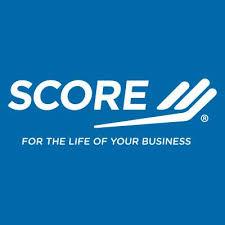Apr '24 • General discussion
Options Agreements and Virtual Mergers
One of the common objections we get when affecting a leveraged buyout is valuation. Business owners in the SME space sometimes have the misconception that businesses trade at 5-10x multiple of profit. The reality from over 100 of our own deals, research from Harvard, various business sale experts and Kingston University is most don’t actually sell and those that do transact at an average multiple of 2.52x. One reason for this misconception is generally the deals you hear about tend to be very large companies (that do sell for higher multiples) and also brokers that to justify their fees will “value a business” at a higher price than reality . The challenge with SMEs even good ones is they are highly risky and lack liquidity in their shares as they are private. Larger companies tend to have diverse income streams and geographical coverage so if one area of a large company is underperforming they still have plenty of parts to it that do perform. Take Virgin as an example they have a travel agency , airline , gyms etc. if a SME business owner has a chain of 3-4 gyms then they are very exposed to one country or region and the micro economic climate. Virgin operates globally in many sectors.
Whilst we will always try to educate a business owner on valuation sometimes you just can’t get them to accept the reality if they do sell they will sell at 2-3 x.
When we pitch an offer to acquire - if it doesn’t progress because of misalignment on valuation we will usually park it in the pipeline and revisit in 6-12 months when aspirations may be more realistic.
Two deal structures that can however be used either at point of making an offer or in a revisit could be virtual merger or option agreement.
Effectively your pitch is about creating a multiple arbitrage by putting them in a larger group that would justify a higher price.
Let’s say you have a company in the recruitment industry as a stand alone £10m turnover and £1m profit - in our normal model the goodwill would be worth £2.5m.
However let’s say you group 10 of these together then you have a group with £100m turnover and £10m profit. At this level there are not just trade buyers but you have private equity - getting a 5-8x multiple would be more realistic.
At £10m profit also there are much more flexible funding options available outside typical asset backed debt like Mezzanine funding , venture capital, growth capital etc. so even facilitating a buyout at this multiple yourself with such funding also becomes in the realms of possibility.
An option contract is a form of agreement between the owner(s) of a company and you (deal maker) — outlining that if you get an offer of $x by y timescale that the seller actively agrees to sell so long as the buyer purchases the company in the set timeframe. Usually this would be at a realistic multiple of say 4-6 x maybe 8 if it’s an acquisitive industry and larger groups trade at this level and within 12/18 months.
You can couple this with a virtual merger so effectively your pitch is the above option agreement but justified you will get the higher multiple by grouping companies together which sell for a higher multiple.
To monetise the deal you can do a few things :
- charge a joining fee (to join the group)
- monthly retainer for preparing business for sale and unlocking benefits of being part of a larger group
- % of the sale price either as a commission or an equity stake in a holding company that merges the group together.
I’ve done several deals like this and I’ve found there are two ways :
- You bring all the companies together but Do NOT unlock the synergies like economies of scale, buying power, cross selling opportunities - and you sell it to the owner that the reason for not doing this is it makes it more attractive to a buyer that we can say we have this large group but haven’t unlocked the synergies so a buyer can see how it could quickly uplift profits.
2.do the opposite of the above work on a consultancy basis to bring the principals of the businesses together and show them (and get them to do the work) were and how to unlock the synergies. The benefit of a year of doing this increases the profits of the group so the sale price likely to be more.
I’ve found option 1 easier and you can justify joining fee and retainer by preparing them for sale :
- maximise profits by working with their accountants (think add backs, capitalising items on the balance sheet), demonstrating future potential / pipeline / contracts and produce detailed financial forecasts and models
- Identifying synergies for a buyer of the companies joining together
- Prepare a virtual data room ready for a potential buyer
- Produce a detailed IM explaining the business, the group, etc
- Market out the IM to a pre agreed target list of potential buyers .
You can do this over a six month period.
I’ve got several deals like this in the following industries :
- recruitment and staffing and HR
- Engineering
- Drop shipping
- Food manufacturing / processing
- Transport , logistics , warehousing
And open to other industries.
Legally there are a few ways and tax differences depending what country you are operating in but the easiest way is to set up a holding company that has the option agreement with the shareholders of the target business and also a virtual merger agreement between the holdco . The holdco is sold to the buyer and the shareholders of the target tag along.
I’d be interested to hear from you on your thoughts on this deal structure , particularly if you have deals in your pipeline you think we could do this type of deal structure . We have this deal structure oven ready (pitch decks, commercial structure, bulletproof Legals and social proof of deals we have done like this).
9
23 comments

skool.com/buy-build-selltm-dealmaker-3774
This group is for Entrepreneurs that wants to grow a business to 8 & 9 figures using Mergers & Acquisitions.
Powered by





